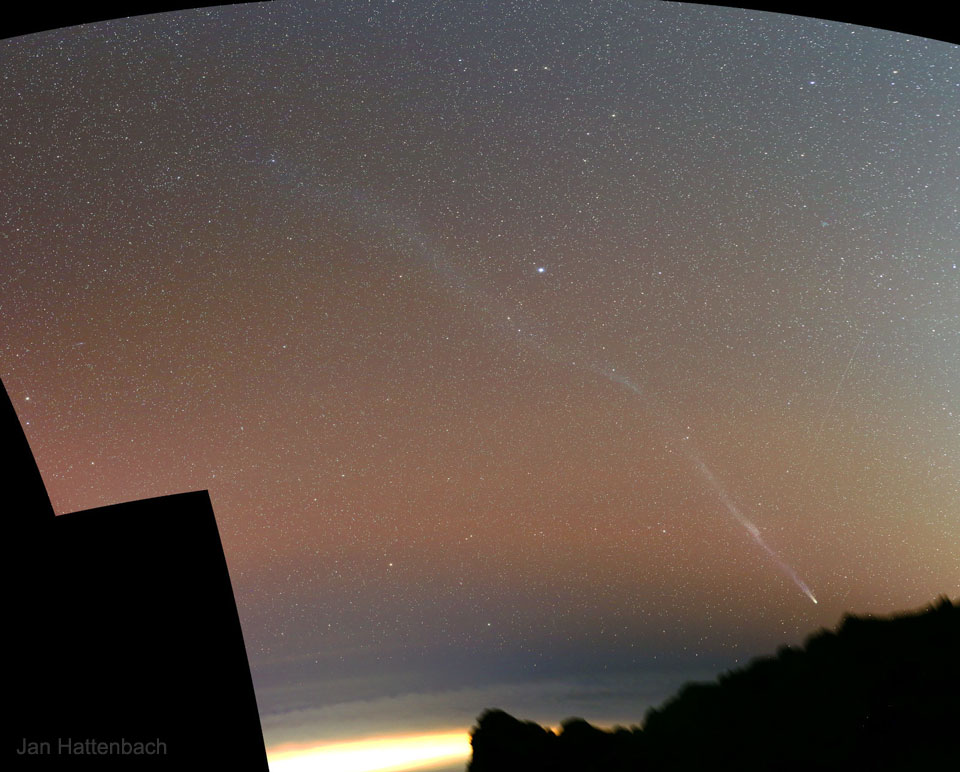2022年1月3日
Comet Leonard’s Long Tail
Image Credit & Copyright: Jan Hattenbach
Explanation: You couldn’t see Comet Leonard’s extremely long tail with a telescope — it was just too long. You also couldn’t see it with binoculars — still too long. Or with your eyes — it was too dim. Or from a city — the sky was too bright. But from a dark location with a low horizon — your camera could. And still might — if the comet survives today’s closest encounter with the Sun, which occurs between the orbits of Mercury and Venus. The featured picture was created from two deep and wide-angle camera images taken from La Palma in the Canary Islands of Spain late last month. Afterwards, if it survives, what is left of Comet Leonard’s nucleus will head out of our Solar System, never to return.
Tomorrow’s picture: moons beyond rings
李奥纳德彗星的长尾
影像提供与版权: Jan Hattenbach
说明: 李奥纳德彗星的彗尾超级长,用望远镜不得见其全貌。双筒望远镜也办不到,因为它的长度仍超出双筒的视野。你的肉眼也见不到,只因它太暗。都市里更看不到,因为天空太亮。只有在有低平视野的幽暗地点,你的相机才能达成这项任务。你或许也有机会一试,前提是这颗彗星今天行进到在水星与金星轨道之间的近日点,在旋过太阳后能存活下来。上面这幅主题影像,是由上个月底摄于西班牙加纳利群岛拉帕尔马岛的二张广角深空相机照片组合而成。如果它存活下来,李奥纳德彗星孑遗的彗核,接着会往太阳系的外围飞掠永不复返。
明日的图片: moons beyond rings








真拍的那么好看